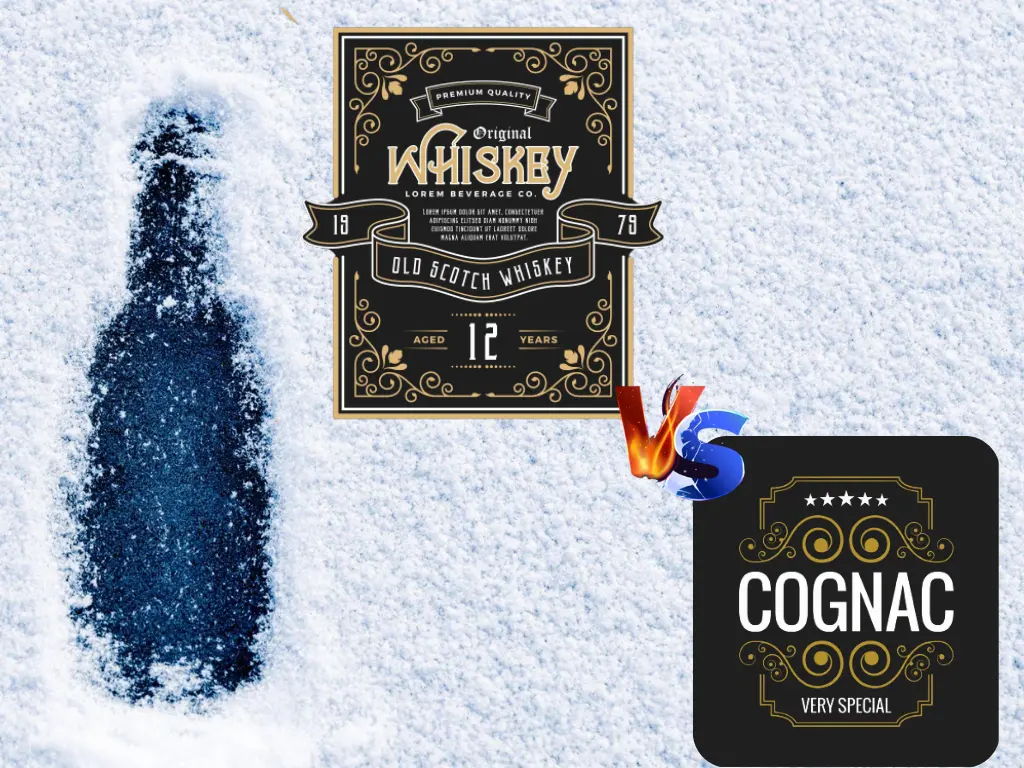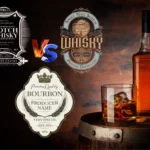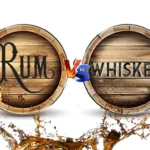We have highlighted the key differences here in this blog post. Stick with us till the end. Let’s get started taking a look at the difference between whisky and cognac.
Generally speaking, two of the most well-known spirits are whisky and Cognac. They have a broad history and serious partners.
The two spirits are made from mature pulverizers. In any case, there are gigantic capabilities between them.
In any case, the same Ugni Blanc grapes used to make white wine are used to make Cognac. Grain, rye, wheat, and maize are several grains that may be used to make whisky.
Aged in oak casks
A couple of kinds of barrels may be used to foster whiskies. Oftentimes, they integrate both new and old barrels (first fill, second fill). The last inclinations and tones of the whisky are influenced by the kind of wood used and the status quo dealt with (planning, toasting, and singing).
The spirit will get specific qualities from the wood depending upon which locale of the country it comes from. Yet European wood regularly contributes notes of dried normal items like cocoa, coffee beans, and flavors to whisky. At the same time, American oak is popular for adding sweet inclinations like caramel and vanilla to the spirit. The wood may, in like manner, give good, smoky contact.
American oak (Quercus alba) is the most elaborate kind in the US for refining and development. It is leaning toward a decision in light of its openness and capacity to consistently add and prepare trimmings to whisky.
Quercus garryana, regularly known as Oregon oak, is another kind of wood that is constantly used to make bourbon. It could give a spirit a specific flavor and is lighter than American oak.
The particular wood grain influences the type of whisky as well. A spirit will hold a bigger number of tannins from thicker grains than from additional thin grains.
Additionally, oak barrels are generally used to age cognac for the primary part of the time. Over the range of the framework, the Cognac truly starts to assume its own personality between the ages of five and eight.
A few organizations join in with various substances as well as maturing the Eau de Strive in oak barrels. Refined water, oak (boise), sugar, and caramel are a couple of examples.
A few experts even switch the Eau de Compete between a few barrels as it ages. While this method is tedious, it assists in diminishing the number of tannins that are added to the eaux-de-vie.
To work on the kind of soul, it’s smart to re-toast and yet again singe the in the middle between fills. Restored barrels frequently produce a more complex whisky with more zest and a natural, nutty flavor.
Made from grapes
A grape- or natural product-based pound is matured by a distiller prior to being refined to make liquor. Before, liquor was made by refining grapes and different organic products (like apricots, apples, and peaches), yet the present distillers utilize an expansive assortment of substances.
Just France is allowed to make Cognac, and there are tight guidelines overseeing the cycle. Something like 90% of the grapes utilized should be Ugni Blanc, Folle Blanche, or Colombard.
Contrary to popular belief, a variety of grains, including rye, wheat, and grain, are utilized to make whisky. It is refined normally and matured in oak barrels to obtain the ideal taste and look.
While the two spirits undergo a similar basic assembly process, they differ critically. The primary difference is that whisky is created from grain, while Cognac is produced from grapes.
That’s another huge difference: while Cognac may only be delivered in the French region of Cognac, whisky can be made in any country. This is huge since it gives you more control over the item’s quality.
The two beverages are packaged and marked in the wake of barrel development. To portray the age of its items, whisky utilizes phrases like XO or Napoleon, yet Cognac names its eaux-de-vie by the many distillates it contains, utilizing wording like V.S. and VSOP.
While the two spirits are popular, their preferences and looks are unmistakable. Both are shaped from grapes; however, whisky is produced using grain and different grains, while Cognac is produced using white wine grapes.
Cognac’s stockpile is restricted by the fact that it must be collected once though whisky might be picked twice every year. This likewise infers that a whisky has a fundamentally higher liquor level than a cognac.
While the two brands are notable, whisky is more open. It is accessible for a range of rates, with certain brands going for just $15. A whiskey’s age may likewise be conveyed more effectively than a cognac’s.
Made in France
While both whisky and Cognac are refined spirits, their creation processes differ. Though Cognac is fabricated from grapes, whisky is obtained from a matured squash of grain. The two have different assembling processes, flavor qualities, and subsequent topographical beginnings.
In the French Cognac region, where just certain grape assortments are cultivated and refined, Cognac is made. These grapes’ juice is aged to deliver an acidic wine that is great for refining. The eaux de vie expected to make Cognac is made after refining and maturing.
The result is made by mixing the Eau de compete with extra Eau de strive from different grape plantations. This mixing method is pivotal to guaranteeing the mix’s fixings have rich flavors.
Bourbon takes additional procedures and maturing, for example, peat smoking or the utilization of new oak barrels, to grant unique attributes. Both of these components improve the specific taste and aroma of the whisky — which might be sweet, hot, or smoky.
Whiskeys will generally be better than ryes, which will more often than not be more smoking and more peppery. Both might be utilized to give different taste profiles that are selective to the given brand.
The eaux de compete are then developed in French oak barrels for no less than two years. The most current eaux de compete have the Versus or *** (three stars) assignments, while the most established have the assignment XO.
The later XXO class, which is a subset of very old Cognac that might be developed for considerably longer, plays an accepted part in XO starting around 2018.
Cognac has particular characteristics and tastes, similar to whisky. They contain the accompanying five principal smells: apricot, vanilla, prune, caramel, and vanilla.
Normally, Cognac is twice refined before being aged for two years in French oak barrels. It is special along these lines. Likewise, the explanation viewed as such an expensive soul is presented in an exceptionally small number of spots all over the planet.
Both whisky and Cognac are great for the event, whether you’re looking for something to drink after a fabulous supper or an evening of unwinding with companions. The two refreshments might be considered independent beverages or mixed drinks and have a long and fascinating history.
Cost
There are a few variables to consider while picking either whisky or cognac, the two most well-known refined spirits. Both have an enormous following among consumers all around the globe and are growing quickly in the worldwide spirits industry.
Quite possibly, the most essential viewpoint that could affect your decision is the expense of whisky versus Cognac. Albeit a respectable blend of whisky might be bought for about $20, uncommon, old, one-of-a-kind cognacs can cost undeniably more.
The cost of whisky differs in view of the sort of grain utilized and the refining technique, and there are often numerous unmistakable assortments to choose from. The whiskey’s complete cost will likewise differ contingent on its age.
Generally fabricated from grain, whisky may once in a while sometimes incorporate rye or maize to give various flavors. The completed item that you buy is then refined, developed in oak barrels, and packaged.
The Cognac area of France is where the liquor known as Cognac is made. Dependent upon severe guidelines, control the assembling of the soul and requires two refining processes. Prior to being appropriate, it should likewise go through no less than two years of development in Limousin oak barrels.
Along these lines, Cognac is an incredibly costly beverage, and a container will set you back a truckload of cash. The extended maturing process and costly expense of the barrels play a part in the item’s excessive cost, yet Cognac’s quality likewise assumes a critical part.
Hennessy, D’USSE, Remy Martin, and Louis XIII are the absolute most conspicuous brands among the numerous different sorts of Cognac. These brands could shift significantly in cost; however, they are many times advantageous ventures.
While they are both refined from grains, Cognac and whisky are made in very various ways. For example, Cognac is refined in copper stills; however, whisky is made in pot stills.
Also, learn







